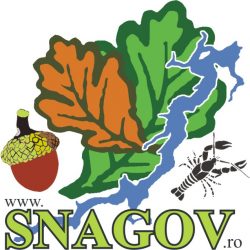“VLAD BASARAB ŢEPEŞ / DRACULA – HISTORY AND LEGEND”
OPEN PHILATELY COLLECTION (according to International FIP guidelines)
The collection is MOBILE (the exhibits are exposed on 3-7 panels + supports)
The collection is in the OPEN class (post cards, stamps, coins, maps, manuscripts, pictures, etc. – anything related to the subject) and:
1) contains 80 A4 sheets (about 500 items) (5 x 16 color A4 sheets);
2) because it has a structured and modular design, can be exhibited a minimum 1 panel (16 A4) up to 7 panels (120 A4 sheets – about 600 items): only the historical section / only Dracula (international perception) / just legends / only global cultural impact / only curiosities.
There are explanations for the included objects, the correlations between them. At the level of each A4 sheet and then the clusters of A4 sheets (per theme). And the entire collection has a set of themes (plan – contents).
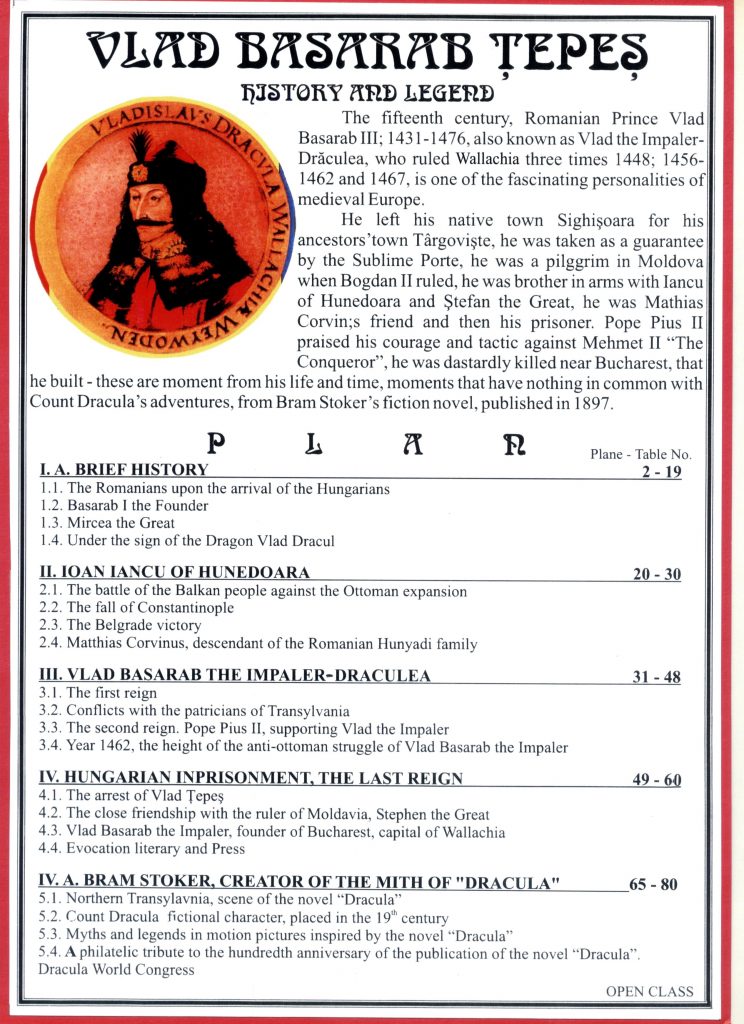
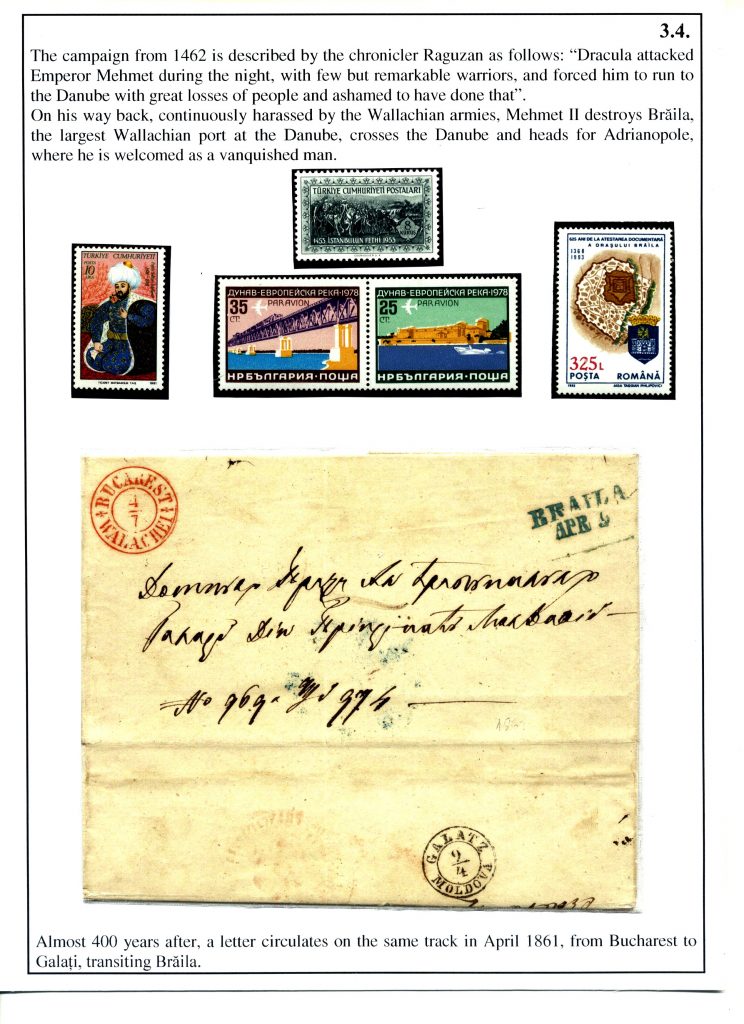
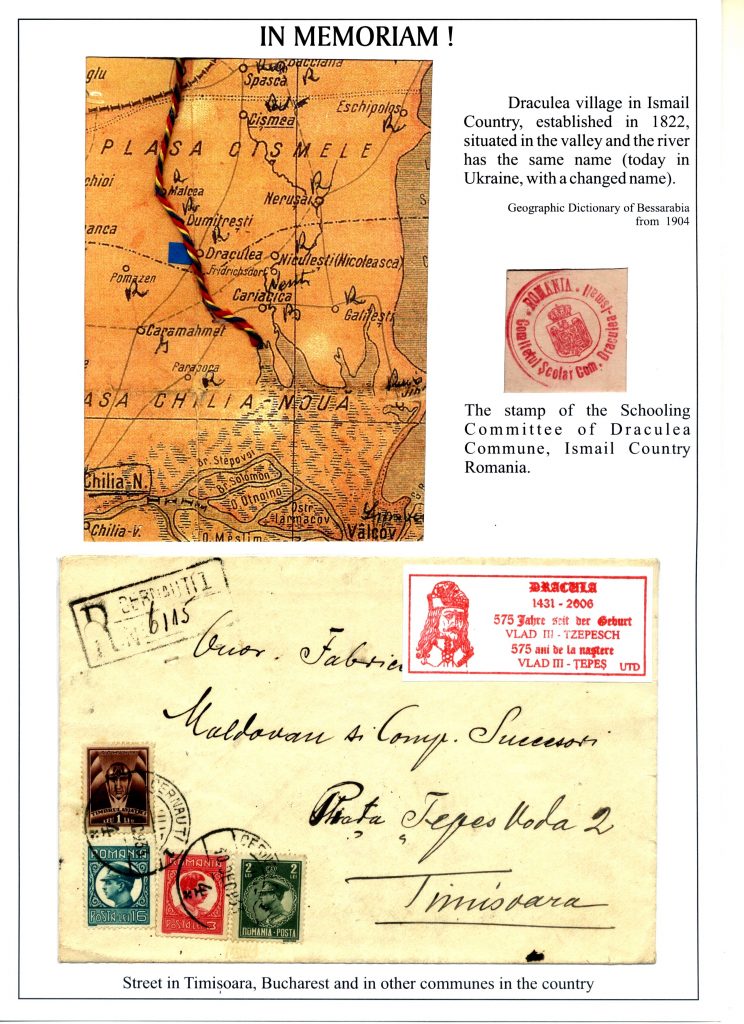
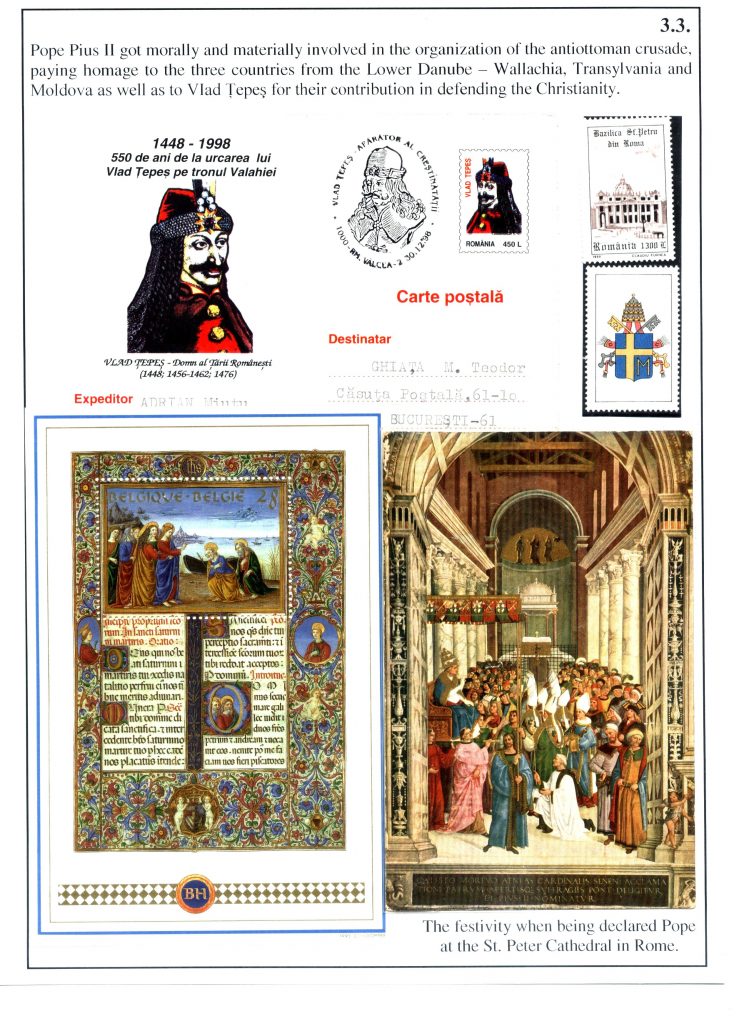
Research carried out includes: old maps, unpublished documents, history books, various type of pictures, different records, etc. The collection exemplifies at least 12 novelties (additional to the main bibliography, consisting of over 40 reference books – on these topics). Each A4 composition illustrates a story, an event, a fact, a situation, a conclusion. It includes few unique items (even over one hundreds of years – old). The collection has a very beautiful vivid – pleasant – chroma.
The main objectives associated with the collection (with 2 main parts: History and Legend) are:
1) the historical part: to present as truthfully, visually, unprecedentedly and pleasantly – but based on research, postal documents, various writings from many sources and countries – aspects of the life and activity of this ruler, appreciated by historians as: ‘cruel but right’. Including how it was widely denigrated by new means: the new Gutenberg press and official propaganda;
2) the legends part: to present the cultural impact, contribution and resulted worldwide diversity of the Dracula myth (post Bram Stoker). Through the set of resulting characters (direct and indirect). (Plays, series, episodes), plays, musicals, ballet, comedy, songs, audio books, computer games – toys (and others), comics, albums (photo-posters), tourism, souvenirs, different associations. All as forms of expression of a set of needs – human emotions. Without including elements that can be considered dangerous or forbidden;
3) to present as accurately as possible the differences between the historical character Vlad Basarab Tepes Dracula and Count Dracula in the novel with the same name written by the Irishman Abraham (Bram) Stoker;
4) continuing the development / growth of the collection – by including new themes / subjects / items;
5) increasing international and national exposure and visibility (through exposures – partnerships), through new participations in international exhibitions and events;
PALMARES – INTERNATIONAL AND NATIONAL :
1) Over 30 awards in official exhibitions of which 13 internationals: Poland (2000), Denmark (2001), Korea (2002), Spain (2004), Austria (2005) , Hungary (2003, 2009, 2011), Turkey (2007), Bulgaria (2010), Slovenia (2012) plus 3 organized in Romania: Dracula World Congress 1995, Dracula World Congress 2003 (IV), Efiro 2008 (see the diplomas and medals received);
2) He received 11 medals (gold, silver, bronze);
3) The collection has a long tradition (since 1979) of exhibitions in Bucharest (the capital of Romania) – documentary testimony of voivode Vlad Tepes – on the oldest known document. The most representative event is 2009 (“Bucharest 550 Years“);
4) The exhibition is publicly presented at various events: anniversaries (cultural, historical), special events (international congresses, etc.), educational events, etc.
Here’s what a collection of public exposures (usually lasting 3-5 days) shows in a cultural center:
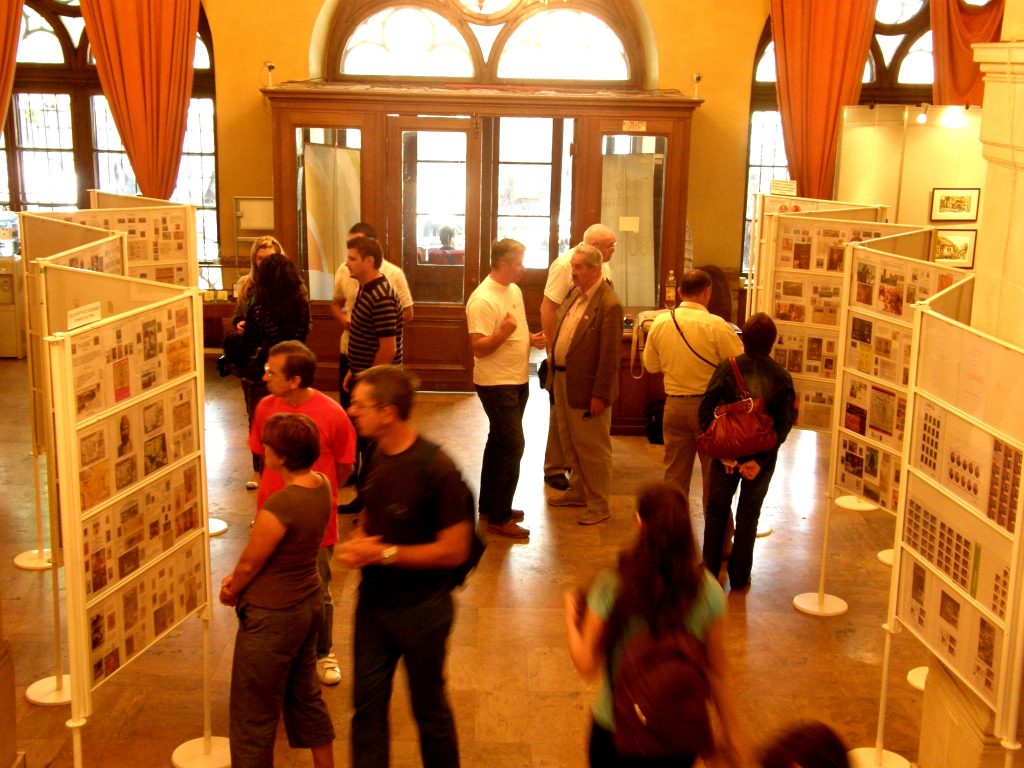
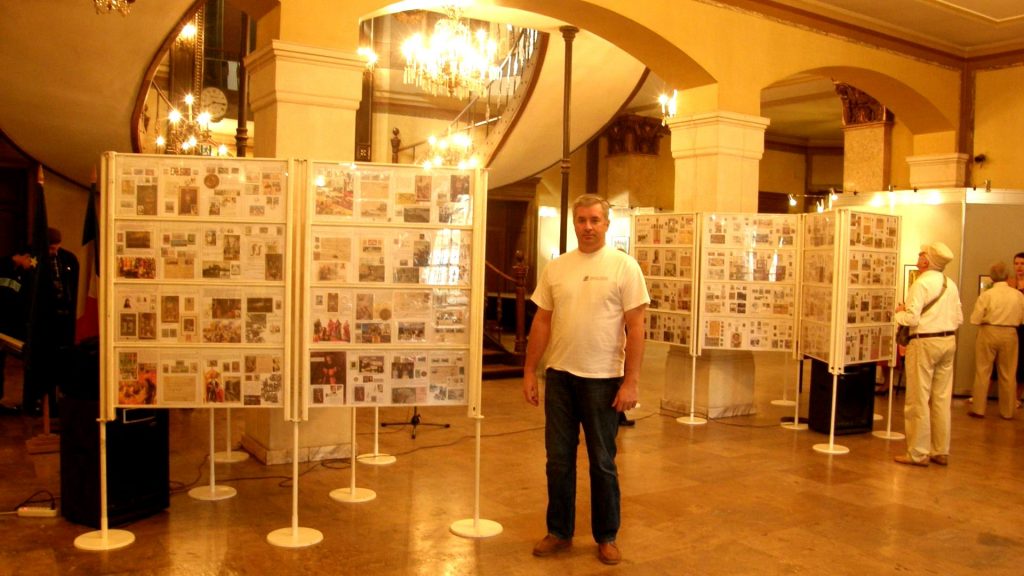
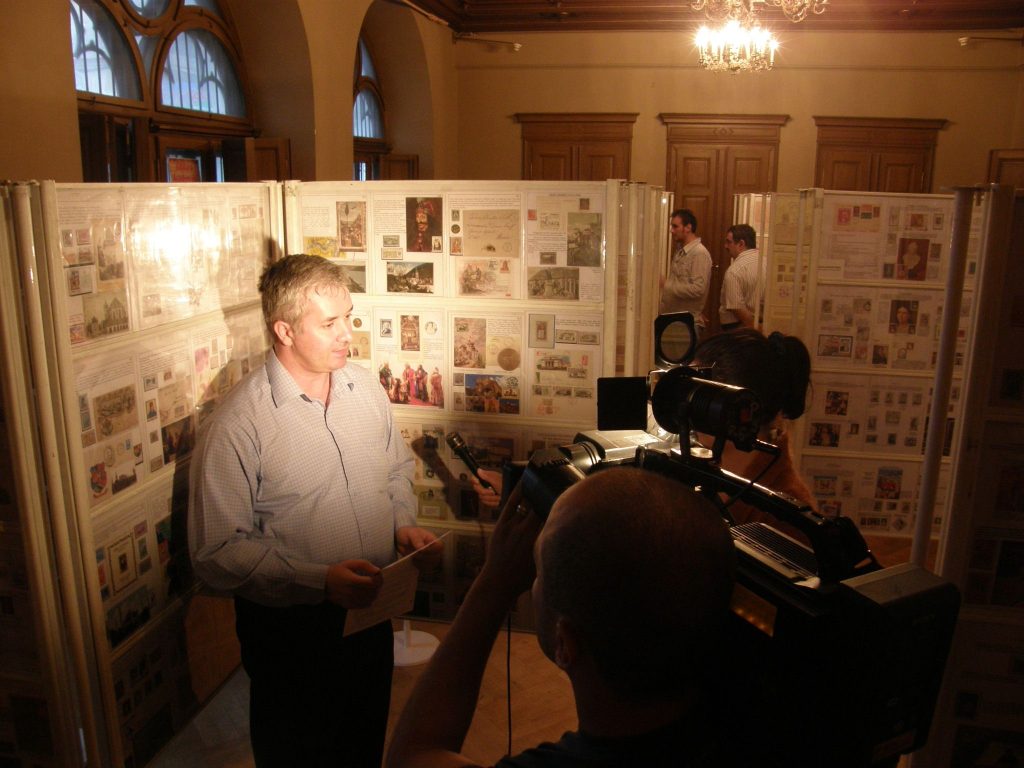
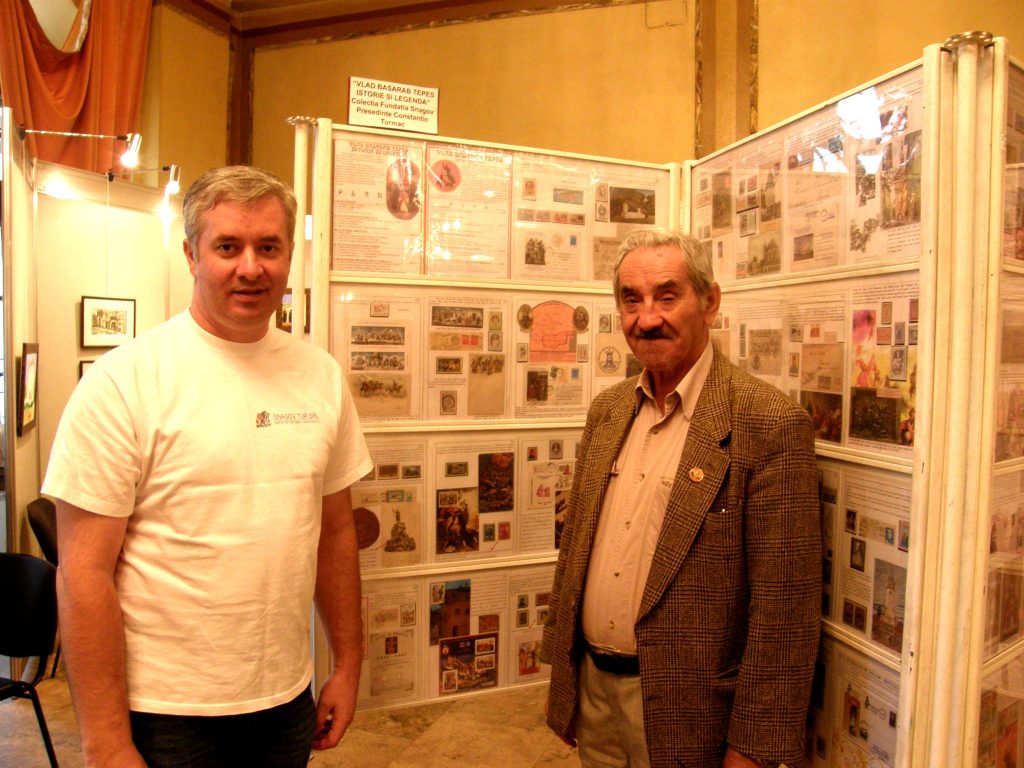
By locating and exposing the collection in the Snagov area (at the Snagov Foundation headquarters), is wanted:
a) establishing the first and the main tourist attraction (organized, documented and presented at international standards) in the Snagov Zone, alongside which to develop several other collections related to the history of the Snagov area included in Snagov Museum Collection (certified by the Ministry of Culture);
b) contribute to the growth of tourist attractions in the Snagov area so that together with other contributions to the development of new tourist attractions (and especially the tourist infrastructure) the Snagov area will re-enter the international tourist circuit and thus allow the economic recovery of the area.
The Collection is exposed in Snagov as part of Snagov Museum Collection:
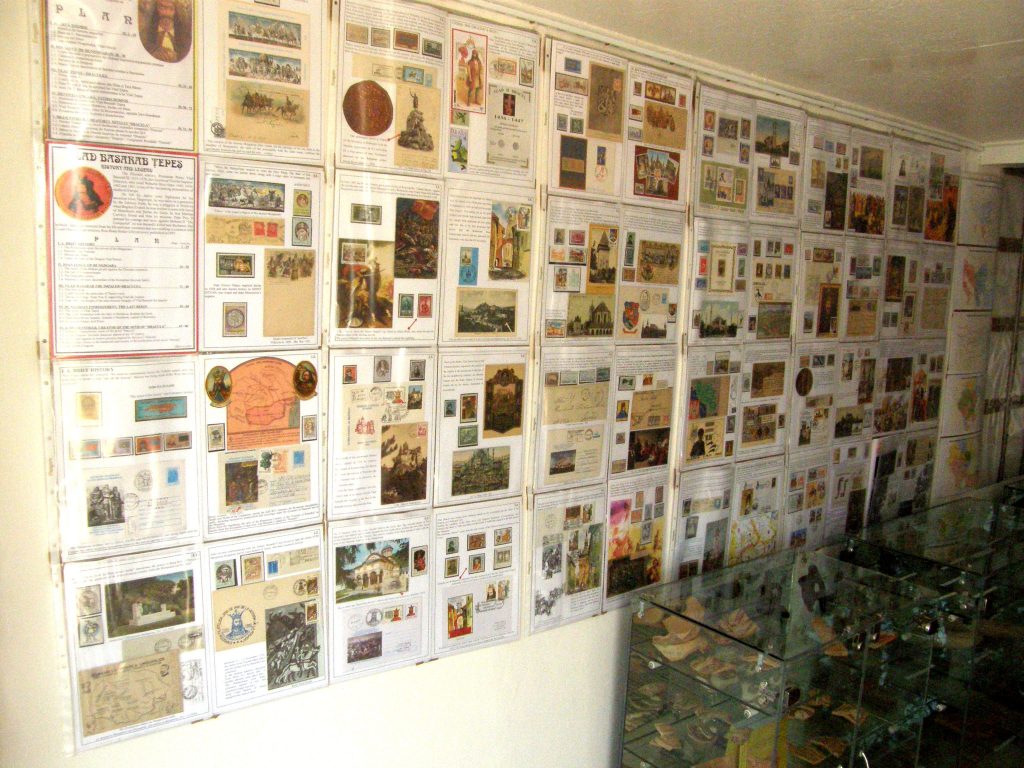

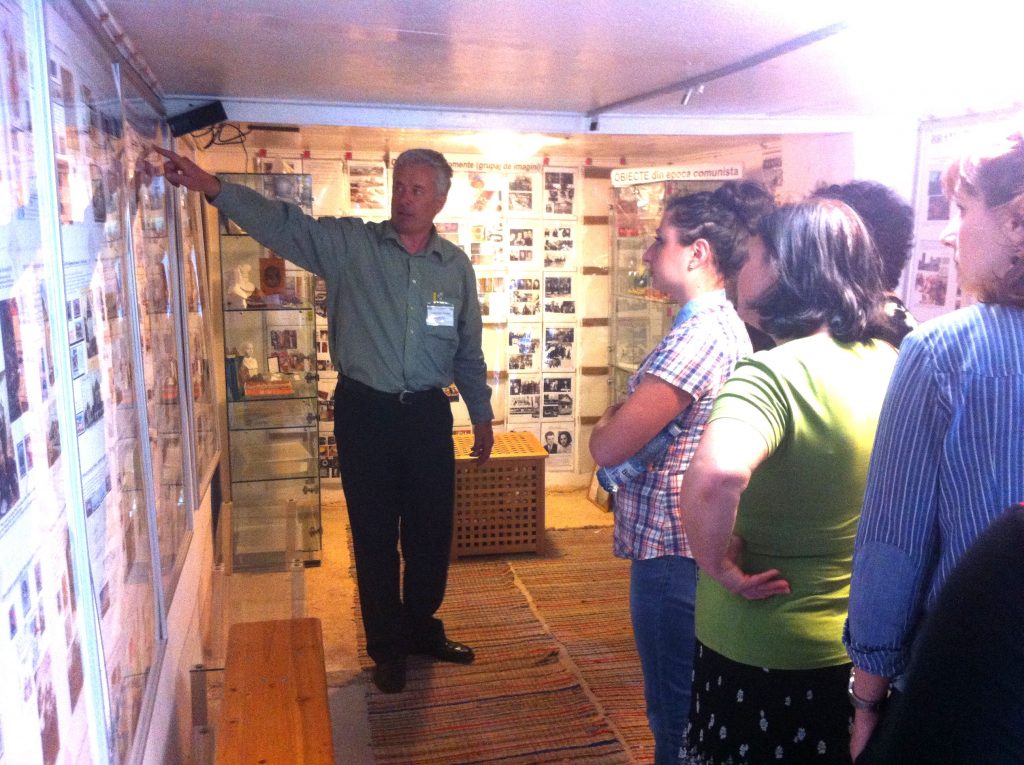
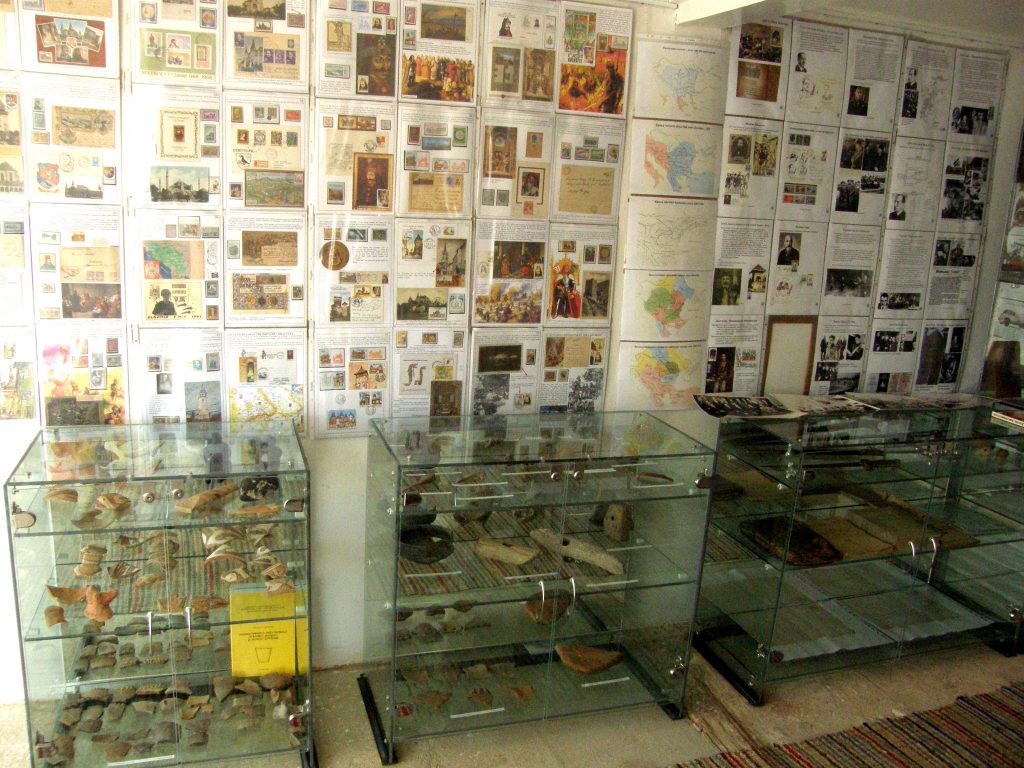
Bram Stoker‘s novel ‘Count Dracula‘ has been a source of inspiration for theater and film directors, writers, and not least for many philatelic programs. At the international level, it became the catalysis and the beginning of a new category of productions that currently has a stable and important market segment (for all cultures include characters, myths, habits and concerns – based on the same types of emotions, and because of stress – modern people resort even more often than in the past to this kind of productions). Thus, the global and unifying identifier of the entire category of productions and associated market is this global Dracula brand (who reached this stage – without explicit or conscious management of specialists and / or of any corporation or interest group).
Over time, many confusions and tendencies to mix the historical character with the fictional character have been created and accumulated (voluntarily and especially involuntarily).
The collection aims to address precisely the differences and similarities between the two characters (myth and reality), which is a topic that is always a central question of the tourists (both before and especially after the eventual entertainment related to the Dracula-Vampire character).
We believe that at least in Romania there must be a place (a source) to address this issue directly. All the more so at the international level, the conclusion is that “Dracula brand belongs to the Romanians“.
The collection is organized in parallel on the two characters: historical and legendary, emphasizing Vlad Țepeș and the cultural dimension. The goal of the steps is to learn and support the truth about each character, in a scientific and visual form.
Different historical aspects are addressed through dedicated themes, at least at the level of A4. Thus, the topics treated are very visual – a feature particularly appreciated by the new generations.
This collection proves that Vlad Ţepeş was a bloody prince because he was pressed by the conjuncture:
a) alternation of rulers / subordination / alliances (voluntary and imposed) in the form of vassals between Christendom (via Budapest) and Islam (via Istanbul) in parallel with paying the tribute to Istanbul (due to changes in power balances – against the background of the European crusades and the Ottoman wars in Europe);
b) internal struggles between the coalition of boyars who supported (the alternatives): the Daneşti and Draculești families;
c) the practices of the epoch (characterized by cruel, bloody, public punishments, in which many bloody rulers co-inspired, but far less mediatized and therefore objectively perceived publicly – than Vlad Ţepeş. He was neither the inventor of impalement or having the record on this);
d) stopping the long series of betrayals of the boyars (in the last 58 years, where the average of a lord was about 2 years old);
e) the desire of the voivode to ensure the independence of UngroValahia (the Romanian country + southern Transylvania) by introducing, ensuring and adhering to new administrative rules (customs, taxes, roads and strict trade circuits, rules, etc.) generating income, accumulation and communities local;
f) straight relations between people (with confidence and predictability) – in the context of the collapse of the archaic values in the local community under the pressure of the numerous hordes of barbarians who have crossed the area in the last hundred years
The subject Dracula is highly appreciated especially in England and the US where it is already part of local culture and there are hundreds of researchers and a market of tens of millions. In these geographical areas, there is less interest in the reality of the subject and a greater concern about the impact and potential of the Dracula topic on the public and the approach as a business. The associated tourist category is “Dark Tourism”.
Examples of exposure modes of the 1-7 panels (interior / exterior) – each of 16 A4 *
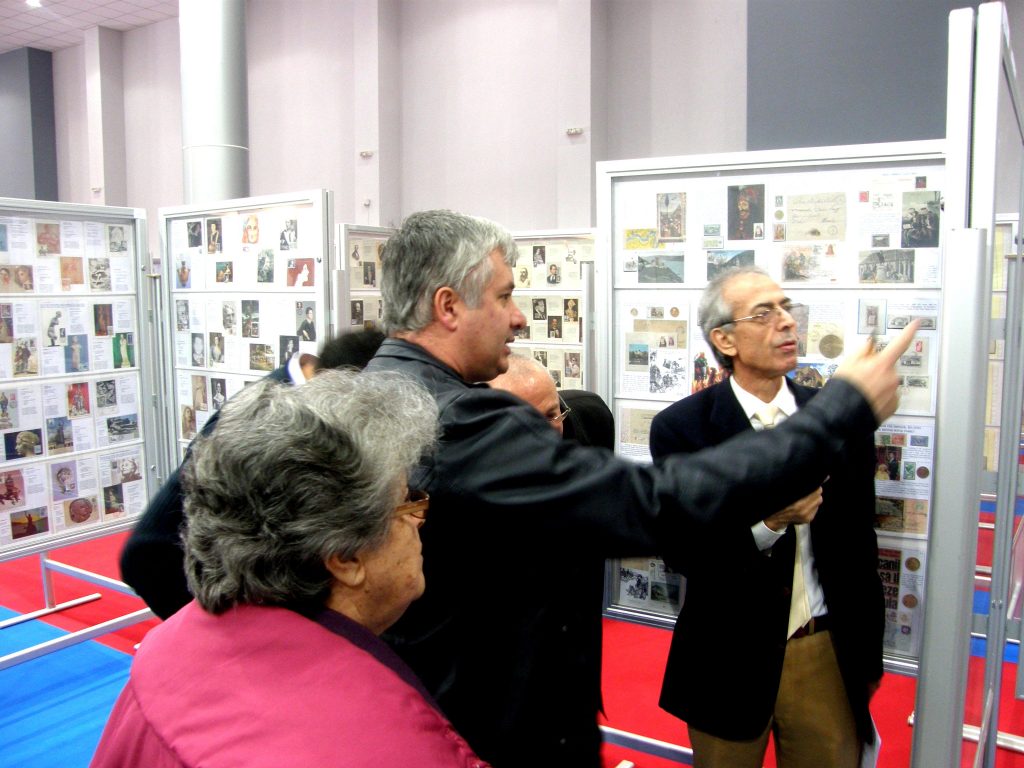
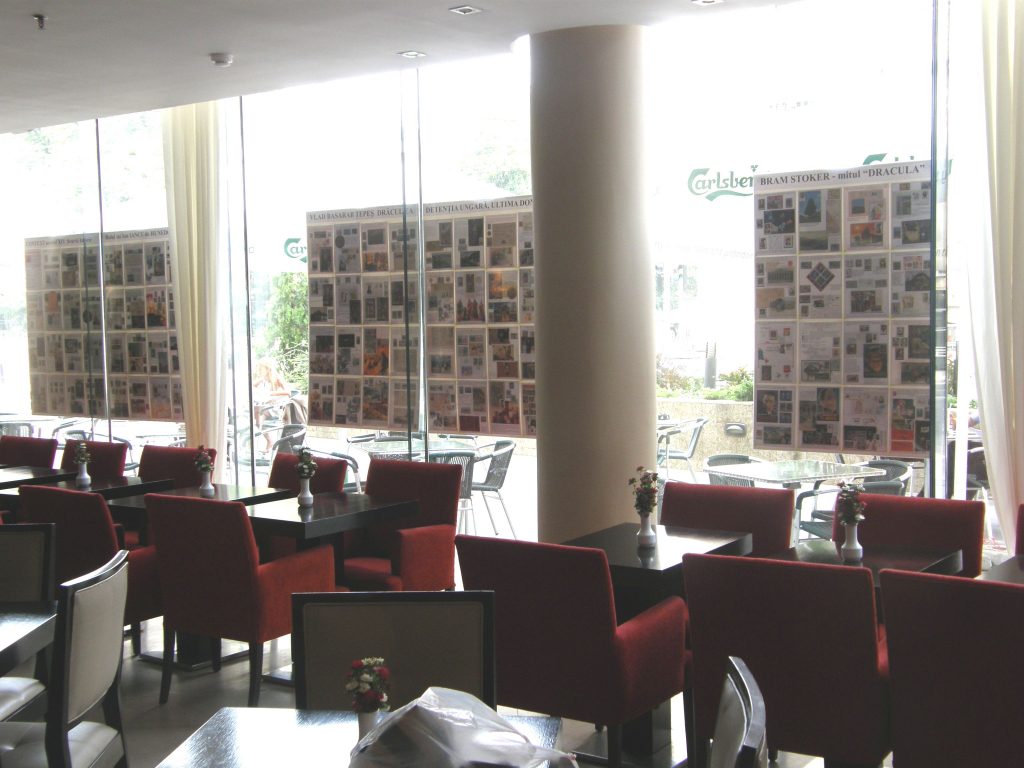
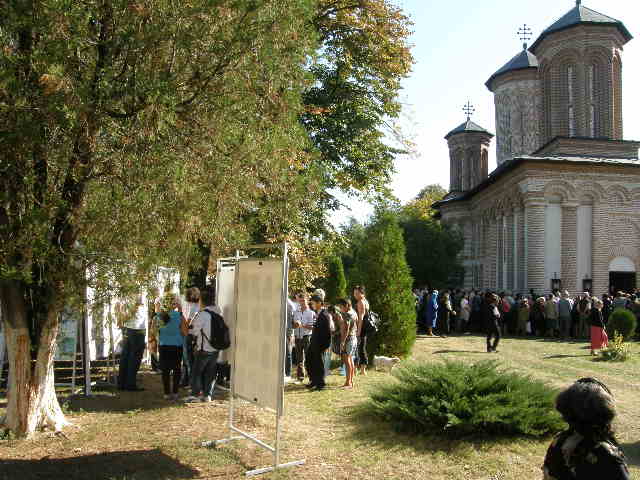
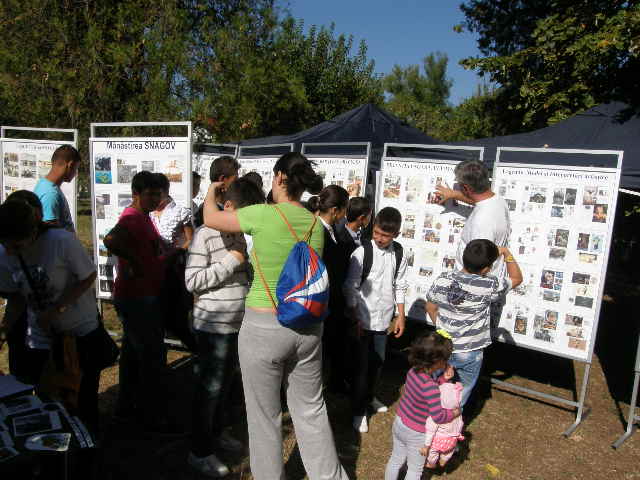
We hereby invite you to visit Palmares (30 awards including 13 international ones)
2) To help (subsidize) new public exposures of this private collection (domestic and foreign)
For more details contact us at [email protected] / Tel: 0720 762 468

